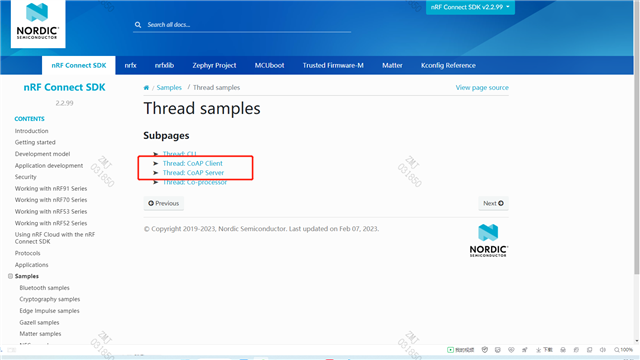I now have five nrf52833dk_nrf52833 development boards burn the thread client procedure,and now I want these five development boards send data to another nrf52833dk_nrf52833 development board which is burnned the thread sever procedure , How do I change the ip? how do I pair the network? how do I modify the demo program ?
-
The following images show the program names burned to different development boards






